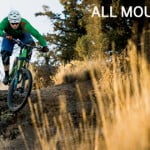
You have to go back to 1998 to find the last non-carbon bike used to win the Tour de France, yet it’s still a material regarded with suspicion by many cyclists.
The sceptics claim it isn’t as durable as steel, alloy or titanium and is liable to be unrepairable after a crash. Everyone has a horror story of carbon failure “that happened to a mate”, yet it was noticeable that after the 20 bike pile-up in Stage 3 of this year’s Tour how many riders hopped back on the same bikes or suffered from fractured bones rather than snapped frames.
The haters also claim that the advantages it offers are wasted on recreational cyclists, because you need to be creating a lot of watts to get speed gains from the aerodynamic and lightweight frames carbon makes possible.
Bike design always used to be about lightness, but in 2000 the UCI introduced a minimum weight of 6.8kg and manufacturers turned their attention to aerodynamics. Inspired by the success Chris Boardman and others had had on the track during the 1990s employing bikes and riding positions honed during wind tunnel testing, bike companies went on quest to reduce drag, resulting in the aero features of modern road bikes.
Aero bikes are characterised by having teardrop profile tubes, flattened forks and stays, and wheels with deep carbon rims. These modifications add mass: for example, Canyon’s produce the Aeroad (pictured above) and they also produce a less-aero carbon model called the Ultimate which is up to 0.5kg lighter.
This feeds into another debate: should you go for a bike that is more aero or weighs less? It might surprise you that 80-90% of the force holding you back on a bike is wind resistance rather than weight. And around 80% of this drag is caused by the rider, the remainder the bike. So these aero designs are only slicing away at the 20% caused by the bike. You would get bigger aero gains by riding using the drop handbars all the time, although your neck might reject that idea.
However, a small experiment conducted recently by Cycling Weeklydemonstrated that a cyclist generating 200w of pedalling power on an aero carbon bike was 1.7kph faster than on a lightweight carbon bike – extrapolated over four hours riding they claimed this would translate into an extra 6.6km distance travelled. But this assumes the unlikely scenario of never-ending flat roads. And generating 200w for that length of time would be beyond the abilities of most weekend riders.
Weight becomes more important than aerodynamics when going uphill – at 5% inclines for average riders and at steeper slopes for the more powerful. Critics often say that although carbon frames are lighter if riders really want to climb more speedily they’d be better off losing some pounds rather than spending some. Judging by the number of rotund gentlemen one sees on expensive carbon bicycles they may have a point.
Carbon is expensive. Although prices are edging downwards, you can buy an alloy frame with a similar groupset and wheels as a carbon model for considerably less. Carbon prices begin around £1,000. We did try borrowing others at that price point, but some manufacturers couldn’t provide us with one.
These aren’t bikes for commuting. They are designed to be ridden long distances. They are for participating in sportives or grinding up mountains where the savings in weight and aerodynamics might keep your legs feeling fresher for longer and ensure you don’t get dropped from the pack. Is that worth several thousand pounds? If you’ve got it to spare, probably.
[“source-theguardian”]




